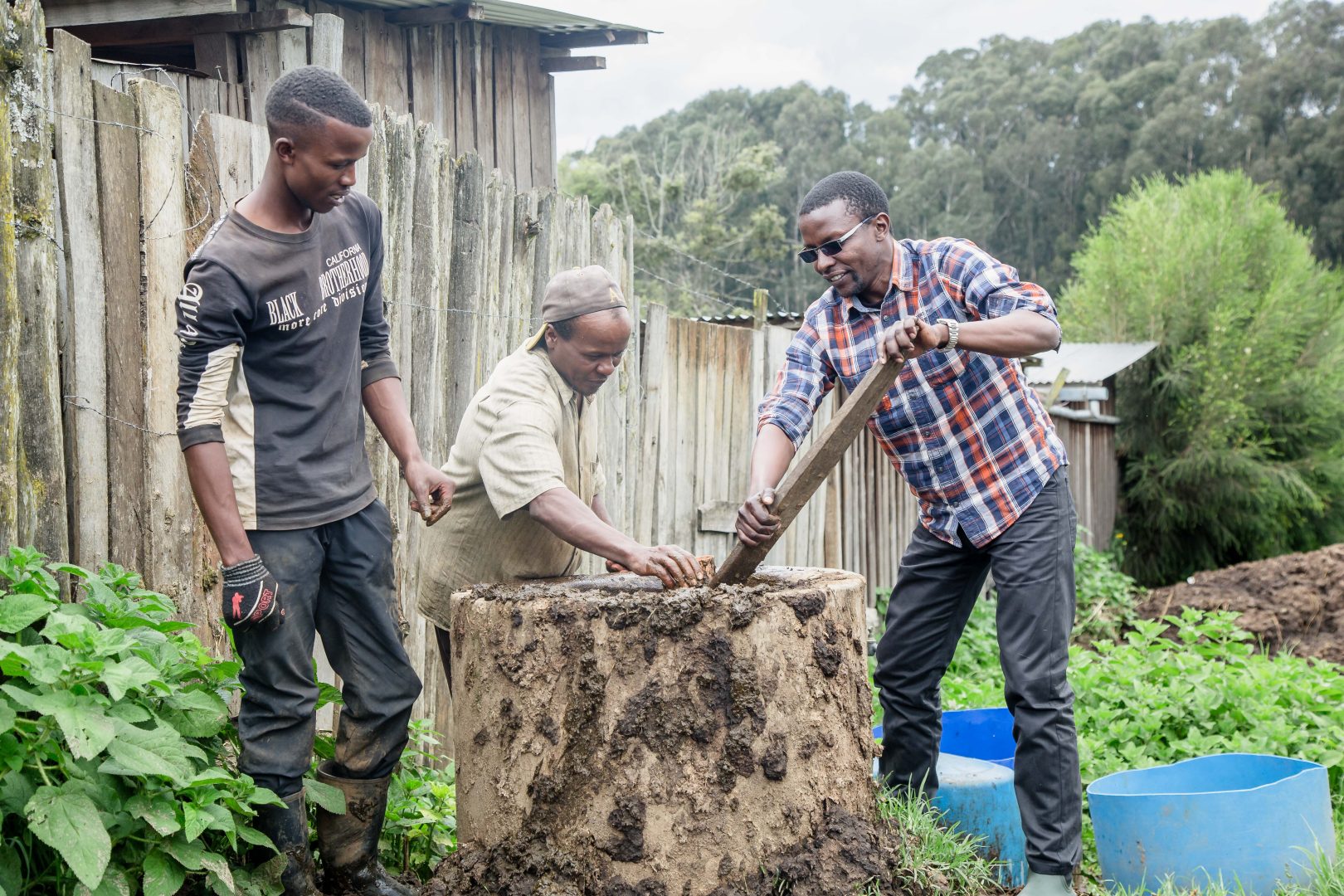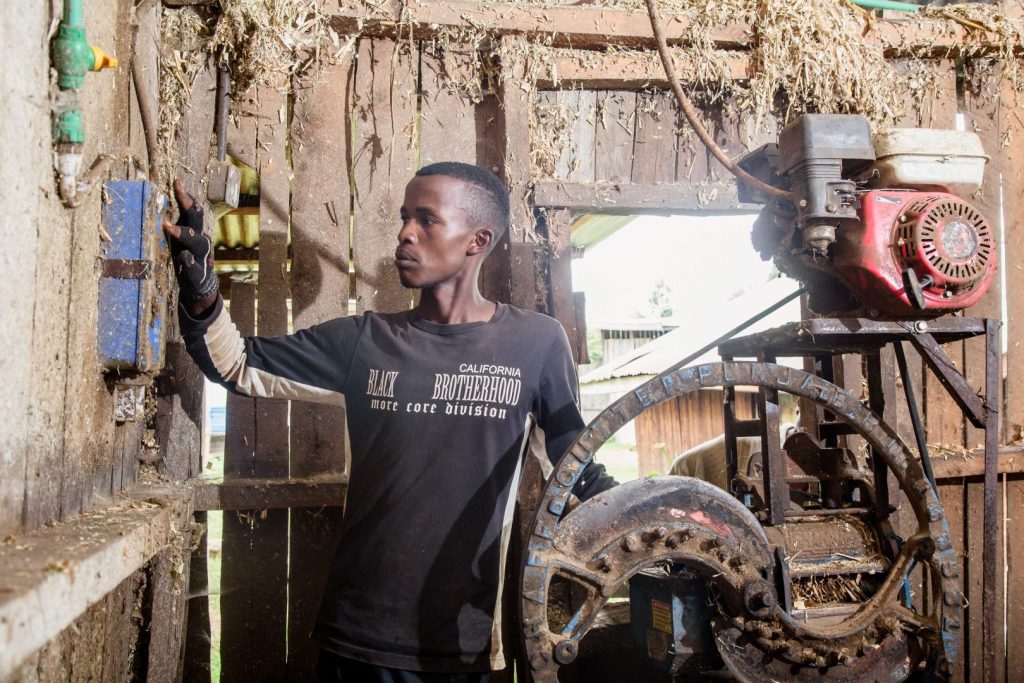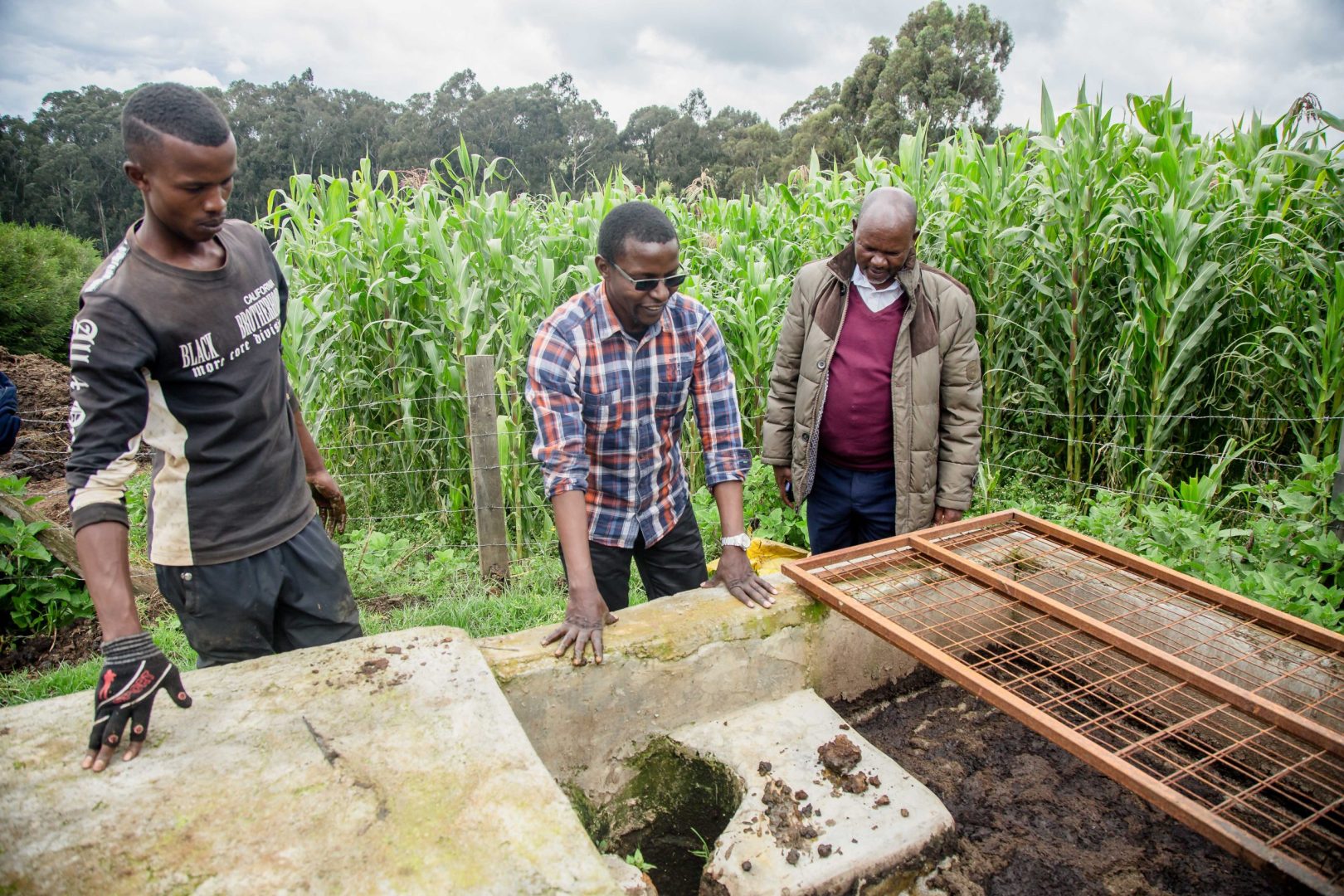In 2014, Caleb Wasilwa had just immersed himself into the world of business. His career path in Economics had just started when he received an invitation to attend an innovation conference in Israel.
That conference changed the trajectory of his life and made it what it is today. It is there that he learnt of different technologies ranging from drip irrigation, drones, biogas and dairy farming. Spoilt for choice, he flew back home with a promise to settle on one idea.
Wasilwa talked to different people about his trip and what he wanted to do; surprisingly, they were all taken by biogas. It was such a fairly new concept to them that it raised more questions than answers.
That was when he realized there was a gap and he sought to quench their thirst with answers. With his two other colleagues, they quickly registered a company, Home Biogas Kenya, and set out to research on biogas from the Israeli company they interacted with during the conference. The biogas company was very receptive and in June 2014, they went back to Israel for hands-on training.

Come August, they worked on a partnership and brought in biogas systems from Israel ready to distribute them and make money. The said systems were 1.2m3 in size, running solely on food waste. For them to work effectively, one needed two kgs of food waste per day with a capacity to cook for only 1.5 hours. They marketed the system for a year but it wasn’t very successful. The product uptake was dismal.
Crushed but not out, Caleb and his team approached Energy 4 Impact, experts in energy access and productive use in sub–Saharan Africa.
Together, they conducted market research on biogas. From the findings, they realized that the biggest market for biogas is farmers either in rural or peri-urban areas, who need biogas for a minimum of five hours of cooking and with a minimum of two dairy cows.
The budget for the plant then was around KShs90,000. They went back to the drawing board to figure out how they would meet these needs. They started with prefab systems from 6m3 up to 20m3 sizes.
Later, they also realized that many farmers were more interested in concrete systems, than prefabs, which were permanent. Over time, Home Biogas Kenya has grown in both expertise and size. They currently have 20 trained contractors and 12 salespeople spread across the country.
By description, they are a renewable energy firm that sells biogas appliances and builds biogas plants; the fixed domes and prefabs are commonly known as PVCs. Both systems deal with the three different types of waste.
Currently, their PVC sizes range between 6m3 to 84m3, with sizes 6m3 to 30m3 being for domestic systems while that above 30m3 are commercial for institutions.
The sizing of the PVC system also depends on the farm and location. Installing the smallest PVC system for example will cost you KShs85,000 including installation, a digester, piping, a burner and a biogas filter. Installing their biggest size will cost you KShs650,000 for the complete set.
For the concrete systems, their smallest sizes are 6m3, which needs a minimum of two dairy cows or four to five cows for free range. The biggest size they are currently doing is 124m3. Installing the smallest concrete system for example will range between KShs100,000 – KShs150,000 whereas the biggest concrete system will range between KShs1,000,000 – KShs1,500,000 for a complete set. All these costs are dependent on various factors like the needs of the client and the resources available.
“Currently, we have served between 80 and 120 farmers as well as close to 20 institutions – children’s homes and organisations across the country,” Wasilwa says.
Biogas is clean renewable energy obtained from biodegradable organic material such as animal waste which is the most common, food waste and human waste. A biogas digester (sealed tank) receives organic waste and provides a means of producing combustible gas.
The waste heats up and in the absence of oxygen, anaerobic bacteria consume the organic material and convert it to biogas. Biogas has become a progressively more popular form of energy. Years ago, biogas provided an energy solution to people in rural areas who lived far away from the electricity grid. It still does, but the peri- urban community has also embraced its use as a substitute for electricity which in recent times has become very expensive.
Biogas is also a fan favourite as it provides a needed environmental solution to reduce logging for firewood, provides organic manure through bio-slurry, reduces Greenhouse gas (GHG) emissions such as methane and nitrous oxide, rehabilitates degraded land as well as improves soil fertility.
George Muiruri is a farm manager at Muringo farm in Oljororok, Nyandarua County. His farm sought biogas installation services from Home Biogas Kenya and their lives were transformed. His employer chose the fixed dome system, as it is permanent, to produce energy for the kitchen and house (lighting and cooking) as well as energy to power the farm pump, chaff cutter and generator.
“I am very happy with the biogas, it is very easy to use and it saves me a lot of time as I don’t need to collect wood anymore,” he said and added: “It has also proven to be cheaper in the long run as we now don’t buy fuel to power the generator, neither do we buy electricity tokens.”
“The Muringo farm plant is physical proof that bigger biogas systems can be used to generate clean and cost-effective power for all Kenyans,” said Wasilwa.
Even with all the positive strides his company has made, Wasilwa still feels there is a lot that needs to be done to bring more people on board.
He says a major barrier to the expansion of the use of biogas is the mass perception that it requires a substantial amount of raw material to produce any meaningful energy output. “Most people also associate biogas with cows. Unbeknownst to them, biogas can also run on pig waste and chicken waste,” says Wasilwa.
He also has plans to set up demo centres in various parts of the country to showcase his work to reach out to many farmers. Sensitization campaigns should be held to educate the masses, he says.

Wasilwa also feels that the Ministry of Energy should liaise with financial institutions to help push their product by providing friendly-loan terms surrounding renewable energy projects. “Most of the farmers have more gas than they can use. They just need to be enlightened to tap it the right way and assisted in setting up biogas structures,” he adds.
Soon, he also hopes to start doing biogas compressions and have CNG (Compressed Natural Gas) gas cylinders which will be an alternative for LPG. This will be an income-generating activity both for the farmers producing excess gas as well as for companies that have a lot of waste to dispose of such as food processing plants, and big dairy or poultry farms among others.
“This will also help us improve the environment by reducing deforestation. In as much as we are telling people not to cut down trees, we need to give them a solution, people have to eat and they have to cook. We, therefore, believe if they don’t have waste and we can sell gas to them, that will still help us to reduce the number of trees that are being cut every day,” he concludes.

 Home Biogas Kenya Managing Director Caleb Wasilwa (centre) overlooks Bio-Slurry pit.
Home Biogas Kenya Managing Director Caleb Wasilwa (centre) overlooks Bio-Slurry pit.









